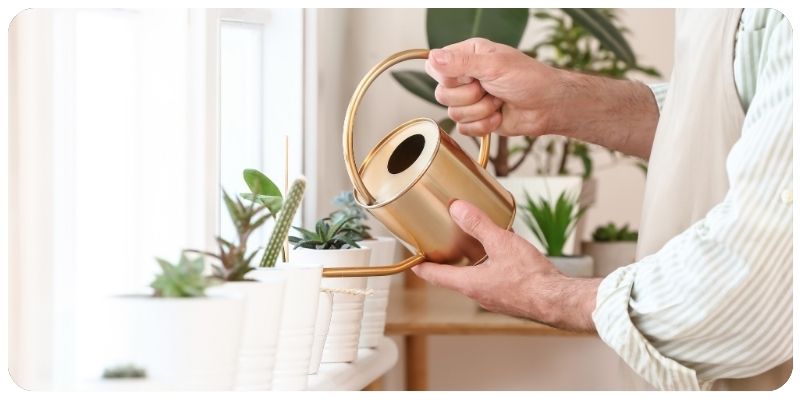
How to Avoid Overwatering Your Houseplants
Overwatering is one of the most common mistakes made by houseplant owners. While plants need water to thrive, too much can cause root rot, yellowing leaves, and even death. In this guide, we will explore techniques to avoid overwatering your houseplants and ensure they remain healthy and vibrant.
1. Understanding the Signs of Overwatering
Overwatering is not always obvious at first, but there are several signs to watch out for:
Common Signs of Overwatering
- Yellowing Leaves: One of the most common indicators of overwatering is yellow leaves, particularly on the lower parts of the plant.
- Wilting: While wilting is often associated with underwatering, it can also be a symptom of overwatering, as the roots become unable to absorb water properly.
- Root Rot: Over time, constantly wet soil can lead to root rot, which causes the roots to turn brown, soft, and slimy.
- Mushy Stems: In severe cases, the plant's stems may become soft and mushy due to excess moisture.
2. Techniques to Prevent Overwatering
The key to avoiding overwatering is to develop a good understanding of your plant’s water needs. Different plants have different requirements, and factors such as the pot type, soil, and environment can all influence how much water your plant needs.
1. Choose the Right Pot
Always use pots with drainage holes. These allow excess water to escape and prevent water from pooling at the bottom, which can cause root rot. If you’re using a decorative pot without holes, make sure to place a pot with drainage inside the decorative one.
2. Use Well-Draining Soil
Soil that retains too much water can lead to overwatering issues. Choose a well-draining potting mix appropriate for your plant. For succulents and cacti, use a mix designed for desert plants, which drains quickly. For other houseplants, a mix that contains perlite or sand will help improve drainage.
3. Monitor Moisture Levels
A simple way to avoid overwatering is to check the soil moisture before watering. Stick your finger about an inch into the soil—if it feels dry, it's time to water. You can also use a moisture meter to get a more accurate reading.
4. Water Less in Winter
During the winter months, most houseplants enter a period of dormancy and require less water. Overwatering during this time is a common issue, so reduce your watering frequency and allow the soil to dry out more between waterings.
3. How to Recover from Overwatering
If you suspect you’ve been overwatering your houseplants, take immediate steps to help them recover. Here’s how:
1. Check the Roots
Remove the plant from its pot and examine the roots. If they appear brown, mushy, or smell rotten, trim away the damaged parts using sterilized scissors. Healthy roots should be white and firm.
2. Repot the Plant
After removing any rotting roots, repot the plant in fresh, well-draining soil. Choose a pot with drainage holes and avoid watering the plant immediately after repotting. Let the soil dry out a bit before resuming your watering routine.
3. Adjust Your Watering Routine
To avoid future overwatering, adjust your watering routine. Allow the soil to dry out more between waterings and monitor your plant’s moisture needs regularly. It’s better to underwater slightly than to overwater.
Conclusion
Overwatering is a common issue for many houseplant owners, but it’s preventable with the right care. By using the correct pot and soil, monitoring moisture levels, and adjusting your watering routine based on the season, you can ensure your plants stay healthy and avoid the dangers of overwatering.